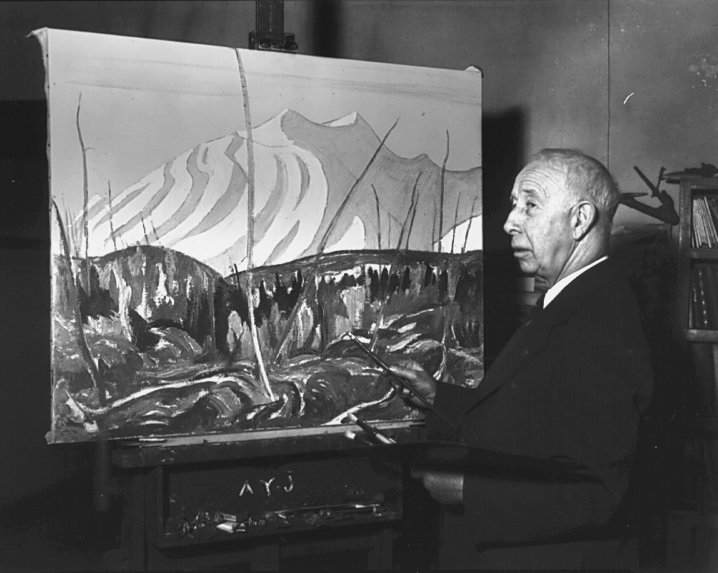A.Y. Jackson (A A.Y. Jackson)

Artist. He was one of the original members of the Group of Seven, a group of Canadian landscape painters from 1920 to 1933 that also included Franklin Carmichael, Lawren Harris, Frank Johnston, Arthur Lismer, J. E. H. MacDonald, and Frederick Varley. He was born Alexander Young Jackson in Montreal, Quebec, Canada on October 3, 1882. After his father abandoned his family, he worked as an office boy for a lithograph company where he began his art training. In the evenings he took classes at Montreal’s Monument-National Theater. In 1905 he worked his way to Europe on a cattle boat, returning by the same means and travelled on to Chicago, Illinois, where he joined a commercial art firm and took courses at the Art Institute of Chicago. He saved his earnings and in 1907 he travelled to France to study Impressionism. It was there he decided to become a professional painter, studying at Paris’ Academie Julian under J.P. Laurens. Some of his most important artistic development was at the Etaples art colony, which he first visited in 1908. He painted his “Paysage Embrumee” then and to his surprise, it was accepted by the Paris Salon. Returning to Canada in 1912, he painted his Neo-Impressionist “The Edge of the Maple Wood,” “Sand Dunes at Cucq,” and “Autumn in Picardy”, the latter which was purchased by the National Gallery of Canada the following year. In 1913 he held his first single artist exhibition at the Montreal Art Gallery with Randolph Hewton. Unable to make ends meet and discouraged by the Canadian art scene, he considered moving to the United States but changed his mind when he sold “The Edge of the Maple Wood” to Toronto artist Lawren Harris. He soon began visiting Toronto, joining the painters who would one day be known as the Group of Seven on major Canadian trips to Algonquin Park, Georgian Bay, Algoma and the North Shore. Like the other Group of Seven painters, he embraced landscape themes and sought to develop a bold style. An avid outdoorsman, Jackson became good friends with Canadian artist Tom Thomson, and they often fished and sketched together. In 1915, with the outbreak of World War I, he enlisted in the Canadian Army’s 60th battalion and was wounded at the Battle of Sanctuary Wood shortly after he reached the front in June 1916. While recovering from his injuries, he came to the attention of Lord Beaverbrook (William Maxwell Aitken), a Canadian business tycoon, British politician, and writer, who had him transferred to the Canadian War Records branch as an artist where he created important pictures of events connected with the war. From 1917 to 1919 he worked for the Canadian War Memorials as an official war artist. In 1919 he returned to Toronto, Canada and helped to form the Group of Seven. Although his name is conventionally associated with the Group, he would remain something of a loner throughout his life. In 1925, he taught at the Ontario College of Art in Toronto and in 1933 he helped found the Canadian Group of Painters. Several members of the Group of Seven later became members of this group, including Lawren Harris, A. J. Casson, Arthur Lismer and Franklin Carmichael. In 1955 he moved to Ottawa, Canada and often painted landscapes of the various regions there. In 1958, he published “A Painter’s Country,” an autobiography dedicated to the memory of Group of Seven member J. E. H. MacDonald. In 1965 he suffered a serious stroke that put an end to his painting career. He recuperated at the home of friend and painter Ralph Wallace Burton. In 1967 he was appointed a Companion of the Order of Canada and in 1970, the Royal Canadian Academy awarded him its medal for lifetime achievement. He died on April 5, 1974, in Kleinburg, Ontario, Canada at the age of 91. (bio by: William Bjornstad)
Born
- October, 03, 1882
- Canada
Died
- April, 04, 1974
- Canada
Cemetery
- McMichael Canadian Art Collection Burial Grounds
- Ontario
- Canada

